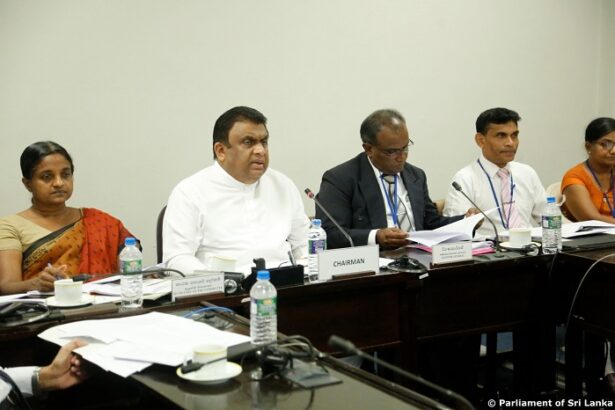Sri Lanka among the 3 countries in the world with a population density of more than 300 per square kilometer and a forest population of 30% – COPA disclose.
Gazette forests with a land mass of more than 200,000 hectares which are not yet gazetted as soon as possible – COPA instructs the Department of Forest Conservation
The largest number of people to see Sinharajaya recorded this year – Department of Forest Conservation informs COPA
It was disclosed at the Committee on Public Accounts that Sri Lanka is among the 3 countries in the world where the population density is more than 300 per square kilometer and the forest population is maintained at 30%.
Accordingly, apart from Sri Lanka, only two countries, namely South Korea and Japan, maintain such a forest system, the officials of the Department of Forest Conservation said.
These facts came to light when the Committee on Public Accounts met in Parliament under the Chairmanship of State Minister Lasantha Alagiyawanna. The Department of Forest Conservation was called before the Committee recently to examine the Auditor General’s reports and current performance for the years 2020, 2021 and 2022. The percentage of forests in the countries of the world is considered to be 31% and it is commendable that the percentage of forests in Sri Lanka country is at the level of 30%, the officials of the Department of Forest Conservation pointed out.
The Committee questioned the officials as to why the entire forest system in Sri Lanka has not been gazetted. Officials stated that as of 2018, about 1.4 million hectares of forests have been gazetted and there are about two hundred and fifty-six thousand hectares of forests that have not been gazetted. Accordingly, the Committee Chair instructed to gazette the forests which are yet to be Gazzeted soon as possible and to send a report to the Committee within two months, including the time taken to gazette and which authority will be in charge of the forests after gazetting.
Officials pointed out that the highest number of local and foreign tourists visiting the World Heritage Sinharaja Forest has been recorded this year. A total of more than 35000 tourists have come to visit the Sinharaja forest in the past few months. The Committee Chair gave instructions to the officials to increase the necessary facilities for tourists without damaging the forest.
Meanwhile, the Committee questioned the officials regarding the Department of Forest Conservation not maintaining a centralized data system at the head office to provide information. Accordingly, the officials informed the Committee that the preliminary work has already been initiated and the Committee Chair gave instructions to the officials to send a report on the same to the Committee.
Furthermore, the Committee was informed that effective internal control measures have not been established to recover the arrears of the Department of Forest Conservation. The officials of the National Audit Office pointed out to the Committee that there are black stone quarries, small-scale hydroelectric power plants and transmission towers to get shortfall income. According to this, the officials stated that the black stone mining in Melasa exceeds the license granted by the Department of Conservation for black stone quarrying. Accordingly, the Committee Chair gave instructions make arrangements to provide only the required quantity of the explosives required for the same while contacting the relevant agencies while granting licenses for black stone quarrying. Furthermore, the officials pointed out that there is a huge amount of money to be received from the telephone communication institutions through the provision of transmission towers. Accordingly, the Committee Chair gave instructions to the officials to arrange to collect all the arrears.
In the meantime, the Committee gave instructions to pay more attention to the plant named Wallapatta as it is a plant that has a high potential to bring foreign exchange to Sri Lanka. The the officials informed the Committee that there is no law banning the cultivation of Wallapatta plant. However, they pointed out that it is prohibited to cut these plants from forests and carry them illegally without fruit.
The officials also pointed out that the imported plant called Aquilaria, which has the same characteristics as the Wallapatta plant, has already started cultivation in Sri Lanka. The officials further stated that it is not easy to distinguish between Wallapatta and Aquilaria plants. It was pointed out that due to the difficulty of identification, the smugglers are trying to advertise the Wallapatta plants cut from the forests as plants obtained from private plantations. To avoid that situation, the officials informed the Committee that they will do the necessary work to identify the two types of plants through a scientific method.
The post Wallapatta cultivation in Sri Lanka: COPA looks at issues appeared first on Newswire.



